Twenty-five years ago, Sarah Rees was getting her children ready for kindergarten in Marysville, a small Victorian town surrounded by the ash forests of the Yarra Ranges National Park. She turned on the tap and sniffed. The water smelled weird, like a chlorine swimming pool.
After dropping off the kids, Sarah walked across the street to the local real estate agent, who told her that, because companies had started logging the Marysville water catchment, the water was now being treated to make it potable (AKA drinkable).
“A few days later I went up to have a look,” Sarah says, “and my heart split in two. You never forget your first logging coupe. Half the mountain was just gone.”
Within a few months, Sarah had closed her share in a local gallery and joined an underground eco-resistance group. Their mission: to stop the clearfell logging of Victoria’s native forests. “This was in 1999, and it had to be very undercover and stealth,” Sarah says. “These were big timber towns. Everyone was either employed by the logging industry or knew someone who was. You didn’t speak out against it.”
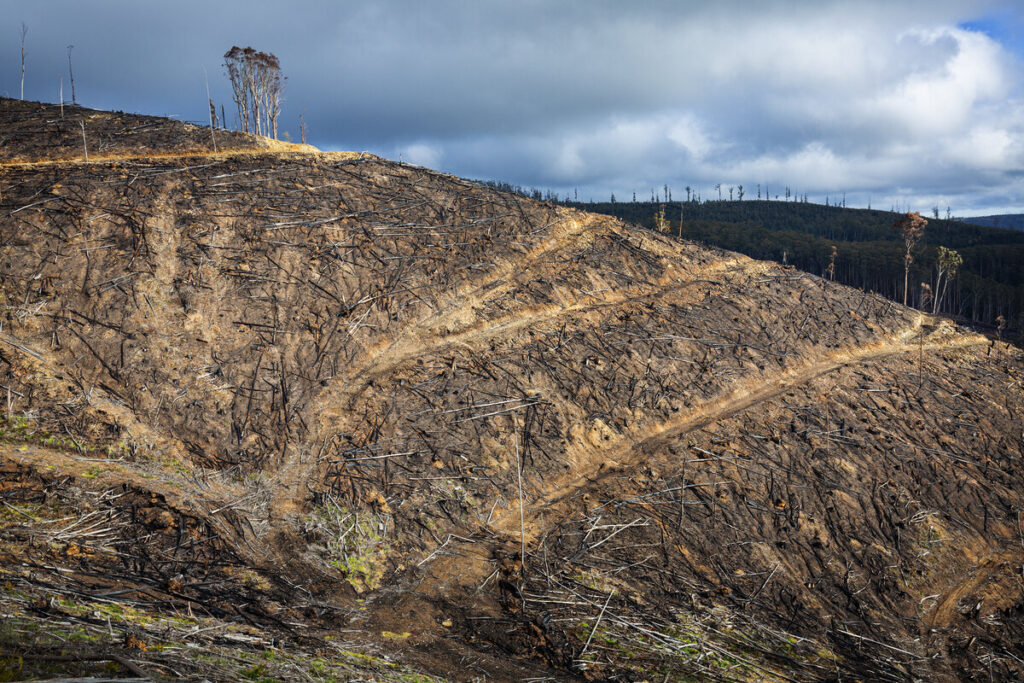
Clearfell logging
“These were big timber towns. Everyone was either employed by the logging industry or knew someone who was. You didn’t speak out against it.” – Sarah Rees
Unlike selective logging, which leaves younger trees standing and tries (with varying degrees of sincerity and success) to minimise environmental damage, clearfell logging is the timber equivalent of strip-mining. Entire swathes of 150-year-old native forest are harvested right down to the ground, leaving the sort of barren, denuded hellscapes you see in Greenpeace ad campaigns. These ‘coupes’ are prone to bushfires and erosion, reduce water yield, and basically mince any native animals living in the zone.
Clearfell logging of native forests was legal in Victoria right up until January 1st 2024, when the state Labour government shut down the industry — six years ahead of schedule. It followed a Supreme Court ruling in 2023 that found the state-owned logging agency, VicForests, had broken the law by failing to protect endangered species. Note the total absence of gasps following that sentence.
Love Music?
Get your daily dose of everything happening in Australian/New Zealand music and globally.
Mired in lawsuits and bad PR, and with profits stagnant or falling, the industry collapsed. Foreign papermill owners, like Japanese company Nippon, sold up and got out while they could. Conservationists and endangered Leadbeater’s possums rejoiced. Regional timber workers were pissed. The government announced an $875 million transition package for those affected, and local conservatives started sharpening their metaphorical pitchforks.
This is the tense, politically charged backdrop to a brand new multi-million dollar proposal: Victoria’s Great Forest National Park (GFNP).
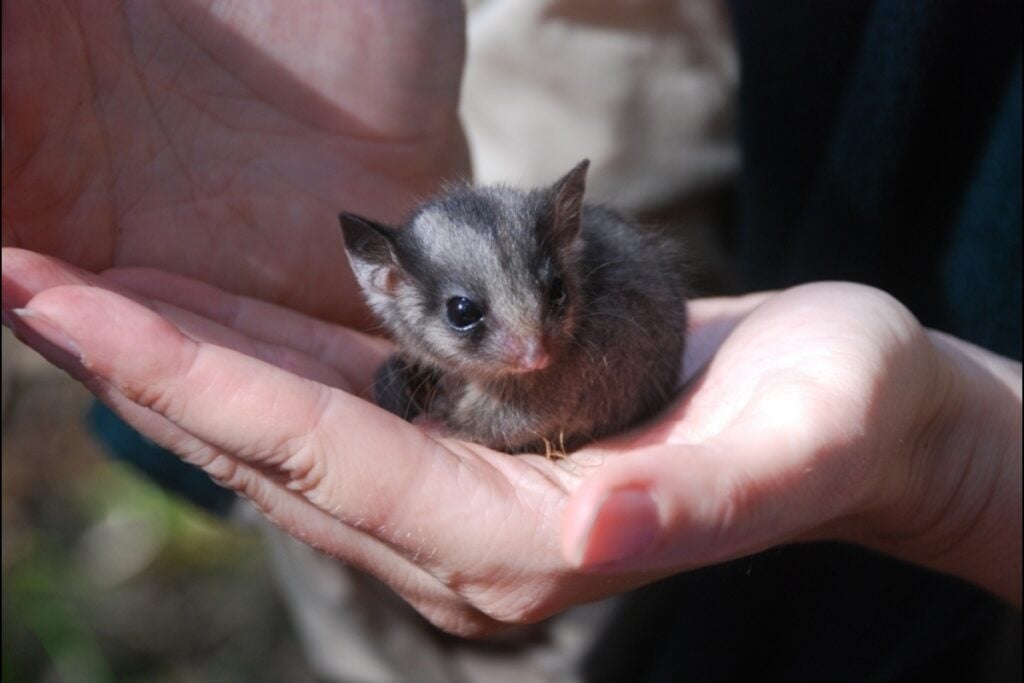
An endangered Leadbeater’s possum
“If it’s successful, the Great Forest National Park will become the largest national park in Victoria.”
If it’s successful, the GFNP will become the largest national park in Victoria, knitting together 170,000 hectares of existing state parks in the Central Highlands, along with 355,000 hectares of additional Mountain Ash forest. To put those numbers in some perspective, Melbourne currently has 168,891 hectares of protected forest surrounding the city. Sydney, by comparison, has roughly 1.09 million hectares. The plan is to create (in a legislative sense) a huge, sprawling temperate rainforest, protected and controlled by parliament, and connecting small towns like Warburton, Baw Baw, Toolangi, Noojee, Healesville and Marysville.
With all this in mind, and given the politics involved, one of the first things Sarah and the GNFP team did was commission studies to determine the park’s economic value. Leadbetter’s possums are cute, but endangered possums don’t generally change government policy. Money does.
So what’s the upside? Well, based on independent calculations, the GNFP will attract around 400,000 visitors each year, creating 750 new jobs and adding more than $70 million to the local economy. By preserving Victoria’s largest catchments — particularly the Latrobe and Goulburn Murray systems — it’ll also help safeguard about 98% of Melbourne’s water.
Then there are the ecological benefits. The ash forests of Victoria’s Central Highlands store more carbon per hectare than any other forest in the world, acting as giant sequestration banks. If a carbon credit scheme ever does get off the ground, that represents a significant investment opportunity — not to mention breathable air. And unlike freshly logged areas, which have been shown to burn more quickly, properly managed old-growth forests also act as natural bushfire suppressants.
Now, you might think, with all that on the table, local residents and depressed ex-timber towns would be queuing up for Great Forest National Park bumper stickers. And some are. LNP Member for Narracan, Wayne Farnham, isn’t one of them.
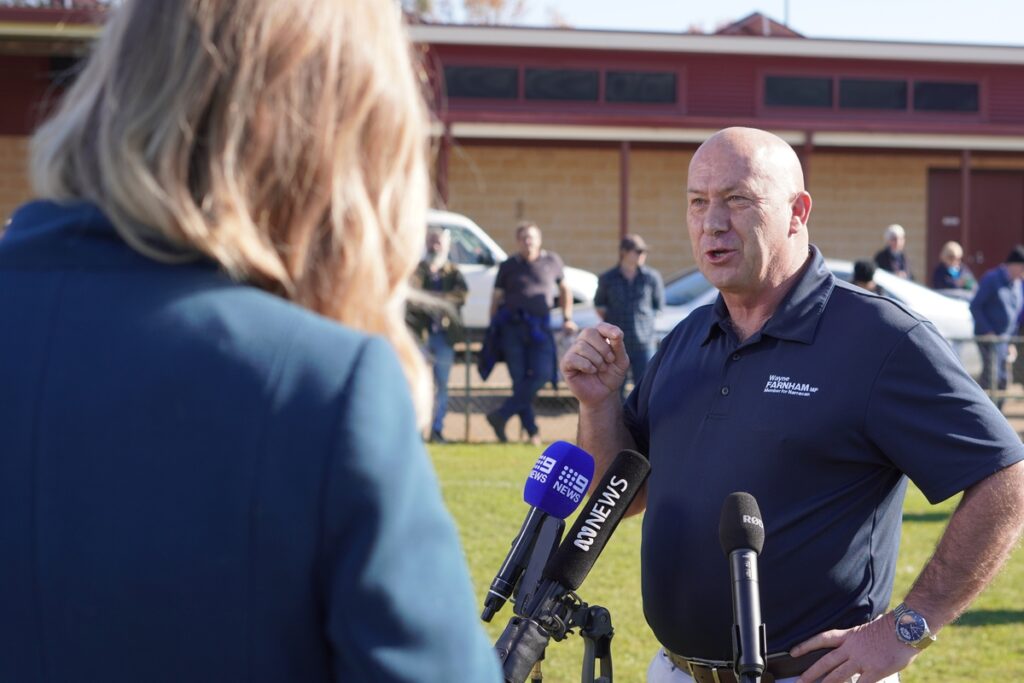
Wayne Farnham
“They say you’ll still be able to do all the activities we have in the state forests. But the community doesn’t trust the government not to lock it down.” – Wayne Farnham, LNP Member for Narracan
“The biggest problem we have is trust in the government,” says Farnham. “They say you’ll still be able to do four-wheel-driving and motorbike riding, hunting, prospecting, all the activities we have in the state forests. But the community doesn’t trust the government not to lock it down.”
In May 2024, Farnham gathered with hundreds of local residents in Drouin, West Gippsland, to protest against the Great Forest National Park. Some travelled more than 230 kilometres just to be there. The crowd represented a grab-bag of interests, from ex-timber workers to conservative politicians, local prospectors, hunting clubs, 4WD enthusiasts and (let’s just say) right-leaning individuals. Victorian Opposition leader John Pesutto showed up, as did several MPs. People waved Eureka flags and held up signs like, ‘Prospectors are an endangered species’.
“It’s destroying the weekend, as far as I can tell,” Farnham says. “They’re saying you’ll be able to fish with a permit — but now we fish for free. They’re saying you can camp with a permit — but now we camp for free. With this government, the trust in regional Victoria is at an all-time low.”
“You keep saying ‘government’,” I point out, “but it’s an independent proposal. The government’s just considering it, right?”
There’s a pause on the end of the line, and the barely audible sound of mental gears clashing. “Well it’s a government website, and the minister Steve Dimopoulos, they’re the ones who have set the panel up. We just want to make our voices clear on what the government should and shouldn’t do. Leave our state forests alone.”
There’s a lot to unpack here. First of all, the proposed park isn’t a government proposal. It’s the brainchild of local residents and conservationists, like Sarah Rees and world-leading ecologist Professor David Lindenmayer, in partnership with companies like Patagonia, who have come on board to back the project. It’s currently being considered by what’s known as an ‘Eminent Panel’ — a group of specialists and First Nations interests, set up by the government, who will make a recommendation at the end of July 2024.
The government’s free to do with that recommendation whatever the heck it wants.
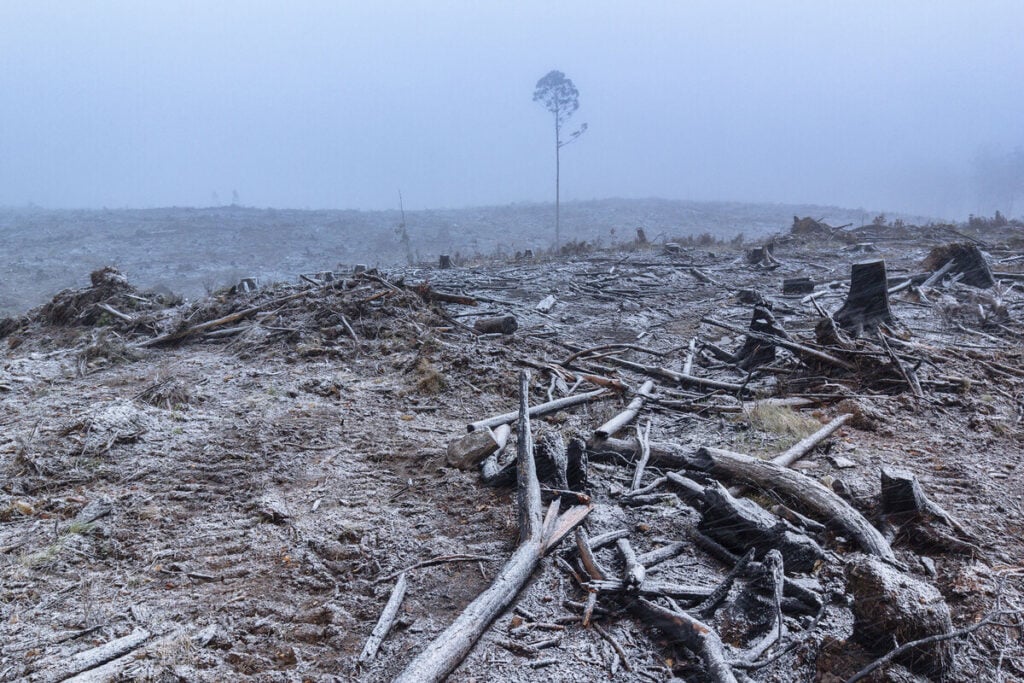
Clearfell logging
“The loggers are using the recreational groups, like the hunters and fishers, and putting out all this misinformation to say we’re banning hiking or camping.” – Sarah Rees
Second, there’s nothing in the existing proposal banning camping, 4WDing, prospecting, fishing, or any other recreational activity featuring big rubber pants. In fact, Sarah says they’re open to all ideas. All ideas except logging. “The loggers are using the recreational groups, like the hunters and fishers, and putting out all this misinformation to say we’re banning hiking or camping. They know we’re not against recreation, but that’s not the story they’re trying to tell.”
The extent to which the national park will be open to the public depends on a parallel review process, conducted by the Victorian Environmental Assessment Council (VEAC). The VEAC has already conducted a preliminary assessment of the plan, and determined that, yep, the areas proposed do meet the criteria for a national park. It’s got nothing to do with Sarah. Although she admits that national parks in general are fighting a bit of an uphill propaganda battle.
See, the last national park Melbourne got was the Yarra Ranges National Park in 1998 — surprisingly, under a Liberal Kennett government. This was a good thing and a bad thing. Good, in that the new park safeguarded several valuable water catchments. Bad, in that it was a heavily restricted park. There were only seven access points, and a few hundred acres of land open to the public. The other 68,000 acres were strictly off limits. Visitors who took a wrong turn were confronted with scary signs on gates saying, ‘Trespassers will be prosecuted’.
“It gave the impression that national parks lock you out,” says Sarah, “which is just not the case. It was all a furphy: a deliberate strategy to put aside areas the loggers needed for their wood supply, while chucking the greenies a bone. We’ll give them this park that no-one can get into, and you guys can log the rest.”
It’s hard to discuss the GFNP without discussing timber. Some people can’t see the forest for the trees.
“The real motivation behind the Great Forest National Park,” says Farnham, “and the government hasn’t admitted this, is that there’ll be no logging in Victoria ever again. When you look through the spin, all this tourism benefit stuff, the real reason is that logging will never return.”

Environmentalist Sarah Rees
“The real motivation behind the Great Forest National Park, and the government hasn’t admitted this, is that there’ll be no logging in Victoria ever again.” – Wayne Farnham, LNP Member for Narracan
This feels a bit disingenuous, since the Great Forest National Park website has huge sections devoted to logging, and is about as openly anti-logging as it’s possible to be without being an endangered Leadbetter’s possum. The government also banned logging in 1.8 million hectares of forest across Victoria; the new national park would cover just 355,000 of that.
“After the Black Saturday bushfires in 2009, all this timber stuff really came to a head,” Sarah says. “The fires knocked out 40% of the logging industry’s forecast, and the communities I lived in, they were devastated. There were deaths, properties gone, livestock gone. The government wanted to salvage the logs they could, so they got every logger in the state to come here and log 24/7.
“I’ll never forget the town hall meeting, when I saw a CFA firefighter get up and say, ‘I risked my life to save these trees, and now I’m watching them go out on the back of trucks to a Japanese-owned papermill’.”
Disregarding all the other ecological and economic benefits, the fundamental purpose of achieving national park status is to prevent the return of clearfell logging (which could easily happen if the sawmill-friendly LNP wins the next state election). This is not a secret or some shadowy conspiracy. It’s more or less printed on the tin. What’s banned at an executive level can pretty easily become unbanned. But not national parks. Lands reserved under Victoria’s National Parks Act 1975 only get revoked as a last resort, and where no other practical options exist. “Time’s running out,” Sarah says. “Especially since we’re projecting a change of government at the next election.”
“I’d be happy to see logging return in some capacity,” Farnham admits. “It was a billion dollar industry. The government ripped the rug out from under it, and people still haven’t recovered. Now we’re pulling logs out of Tasmania and shipping them up to Heyfield in Victoria. How sustainable is that?”
It’s a fair point, but the bigger problem is that the relationship between Labour and many timber workers is likely irreparable. When the industry imploded, so did the capacity of a lot of regional communities to trust the government. At least this government. People were hurting, and are still hurting, and those wounds might take generations to heal.
The funny thing is, conservative MPs, like Farnham, and conservationists, like Sarah Rees, should be on the same side. They both genuinely care about local communities. They both want to inject cash into the regions, boosting depressed ex-timber towns like Toolangi and Noojee. They both want to encourage recreational land use and get more people connected to the wilderness. They both believe in tourism. And they both want fewer bushfires.
The fact that they’re opponents speaks more to the current political climate. How easy it is to turn fear into fuel. It feels like one side is coming to the table with an open mind and open arms. The other just really, really wants to cut down trees.
“It’s still a theoretical park,” Sarah says, “a ‘What If’ scenario. What economic assets can we generate? How can we reconnect people with their forests? How can we include the land in a better management strategy? It may not look exactly like what we’ve put down on paper, and we’re open to that. We just don’t want it open to logging.”
This article features in the September-November 2024 issue of Rolling Stone AU/NZ.
Whether you’re a fan of music, you’re a supporter of the local music scene, or you enjoy the thrill of print and long form journalism, then Rolling Stone AU/NZ is exactly what you need. Click the link below for more information regarding a magazine subscription.



























